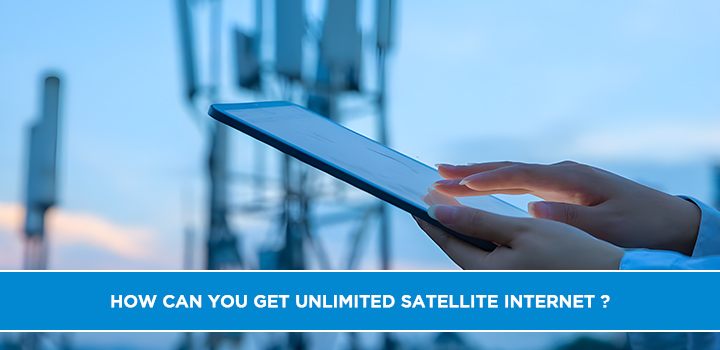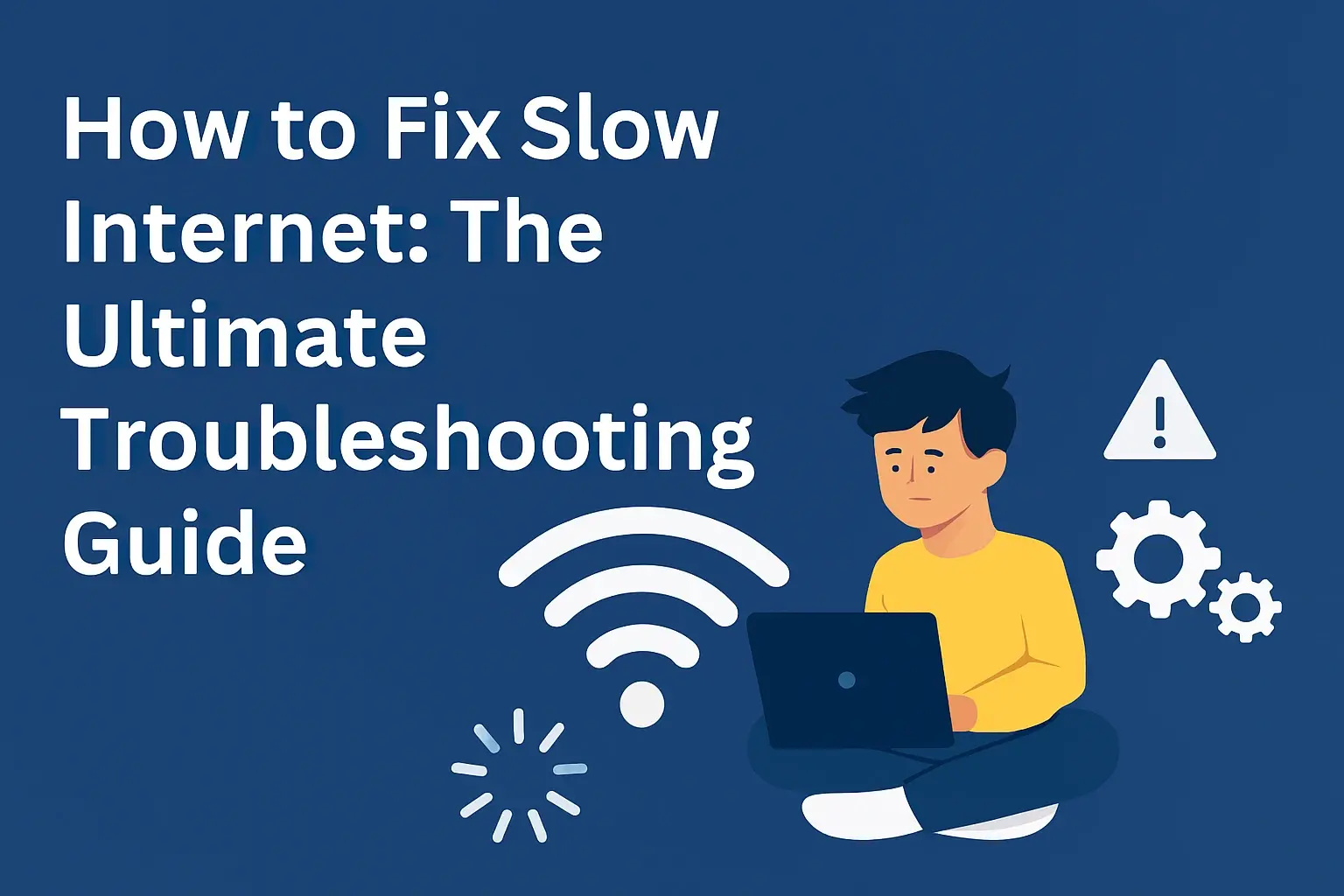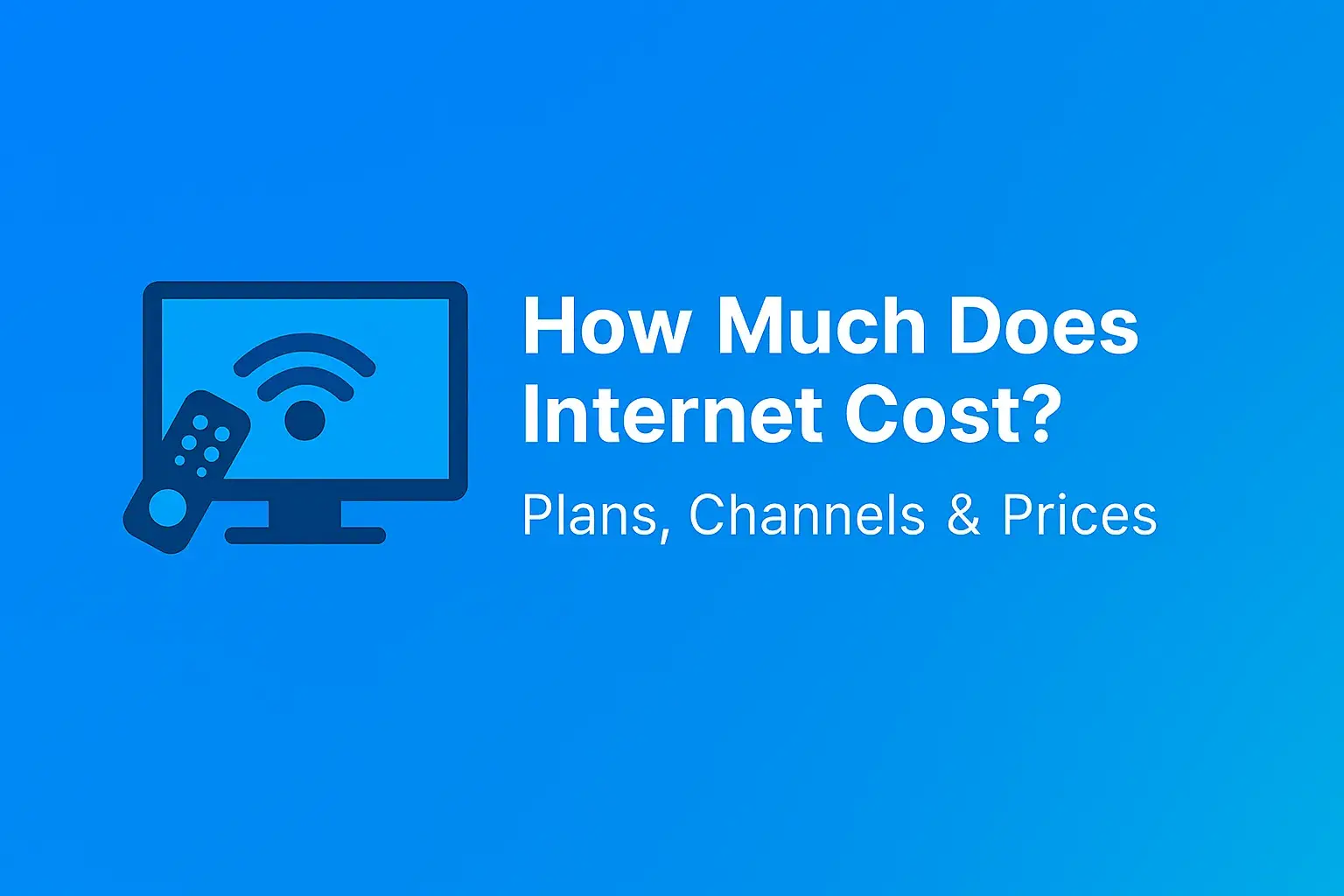How can you get Unlimited Satellite Internet?

Discover the definitive guide to achieving unlimited satellite internet. This comprehensive article demystifies the concept of "unlimited" data in satellite technology, explores current offerings, and provides actionable strategies for maximizing your connection in 2025. Get ready to explore the possibilities of truly unrestricted satellite broadband.
Understanding "Unlimited" Satellite Internet in 2025
The quest for "unlimited" satellite internet is a common search query for those in rural or underserved areas where traditional broadband options are scarce. In 2025, the landscape of satellite internet has evolved significantly, with new technologies promising faster speeds and more generous data allowances. However, the term "unlimited" in the context of satellite service often comes with nuances. It's crucial to understand that true, unrestricted, unlimited data with no potential for slowdowns is still a rare commodity, even with the latest advancements. This guide will dissect what providers mean by "unlimited," explore the available options, and equip you with the knowledge to make the best choice for your connectivity needs.
Top Satellite Internet Providers and Their "Unlimited" Plans
The satellite internet market is dominated by a few key players, each offering different approaches to data allowances. Understanding their plans and policies is the first step toward finding a solution that feels unlimited for your usage.
Starlink: The New Frontier of Satellite Broadband
SpaceX's Starlink has revolutionized the satellite internet industry with its Low Earth Orbit (LEO) constellation. Unlike traditional geostationary satellites, Starlink satellites orbit much closer to Earth, resulting in significantly lower latency and higher potential speeds.
In 2025, Starlink offers several service tiers, with its most common residential plan often marketed as having "unlimited" data. However, it's essential to examine the specifics. While Starlink doesn't typically impose hard data caps that immediately cut off your service, they do have a "Best Effort" tier for users in high-demand areas, which can experience slower speeds during peak usage times. For most residential users, the standard plan provides a generous amount of high-speed data, and once that threshold is met, speeds may be deprioritized. This means your connection might slow down when the network is heavily utilized by other users in your area.
Key Features of Starlink (Residential):
- Speeds: Typically range from 50-200 Mbps download and 10-20 Mbps upload, though this can vary.
- Latency: Significantly lower than geostationary options, often between 25-50ms.
- Data: Advertised as unlimited, but deprioritization can occur after exceeding a certain monthly threshold (e.g., 1TB of high-priority data).
- Hardware: Requires a self-installation kit, including a satellite dish and Wi-Fi router.
- Availability: Expanding rapidly, but still subject to regional capacity.
The concept of "unlimited" with Starlink is more about offering a high data allowance that is sufficient for most households without strict cutoffs, rather than a guarantee of consistently peak speeds at all times, especially if network congestion is high. For many, this feels like unlimited usage for everyday tasks like browsing, email, and standard-definition streaming.
Viasat: Established Satellite Service with Data Caps
Viasat is a long-standing provider of satellite internet, utilizing geostationary satellites. These satellites are much farther from Earth, which historically led to higher latency but provided widespread coverage. In 2025, Viasat continues to offer plans that are often characterized by data caps.
While Viasat plans may not be strictly "unlimited" in the same vein as Starlink's offering, they do often include a substantial amount of high-speed data. Once you exceed your monthly high-speed data allowance, your speeds are typically throttled significantly, often to very slow speeds (e.g., 3 Mbps or less), making many online activities difficult. Some Viasat plans might offer bonus data during off-peak hours (late night/early morning), which can be a way to manage your data usage for large downloads or updates.
Key Features of Viasat:
- Speeds: Vary by plan, typically ranging from 12-100 Mbps download and 1-3 Mbps upload.
- Latency: Higher than LEO options, often 500ms or more.
- Data: Plans have defined monthly data allowances. Exceeding these leads to significant speed reductions.
- Hardware: Professional installation is usually required.
- Availability: Extensive coverage across North America and globally.
The "unlimited" aspect with Viasat is more about the potential for continued connectivity, albeit at reduced speeds, after your primary data allowance is used. It's not truly unlimited high-speed data.
HughesNet: Consistent Coverage, Traditional Data Limits
HughesNet, another established player using geostationary satellites, offers a similar service model to Viasat. Their plans in 2025 are generally structured with fixed monthly data allowances.
HughesNet's approach to data is straightforward: you have a set amount of high-speed data each month. Once this allowance is depleted, your speeds are significantly reduced for the remainder of the billing cycle. They often promote "unlimited" data by emphasizing that you won't be cut off, but the drastic speed reduction after reaching your cap is a critical limitation. Similar to Viasat, some HughesNet plans might offer bonus data during specific off-peak hours.
Key Features of HughesNet:
- Speeds: Typically range from 25-100 Mbps download and 1-3 Mbps upload.
- Latency: High, similar to Viasat, due to geostationary satellite orbit.
- Data: Fixed monthly data allowances. Throttling occurs after exceeding the cap.
- Hardware: Professional installation is standard.
- Availability: Broad coverage across North America.
For users of Viasat and HughesNet, achieving an "unlimited" experience hinges on carefully managing data usage within the provided allowances and leveraging any off-peak data bonuses effectively.
What "Unlimited" Really Means: Navigating Data Policies
The term "unlimited" is often a marketing tool, and in the context of satellite internet, it rarely means what consumers might intuitively expect. Understanding the underlying policies is key to managing expectations and avoiding frustration.
Data Caps and Throttling Explained
Data Caps: These are the maximum amount of data you can use at full speeds within a billing cycle. Once you reach this cap, your internet service provider can either stop your service, charge you overage fees, or, most commonly with satellite, throttle your speeds.
Throttling: This is the intentional slowing down of your internet connection by the provider. For satellite internet, throttling typically occurs after you've exceeded your high-speed data allowance. The speeds can be reduced to a crawl, making activities like streaming video, online gaming, or even basic web browsing very difficult. The exact speeds after throttling vary significantly between providers and plans.
For providers like Viasat and HughesNet, exceeding the data cap means a significant degradation of service. Starlink, while often labeled "unlimited," employs a system of deprioritization after a certain high-priority data threshold is met. This means your connection might become slower during peak times if you've used a large amount of data, but you generally won't be completely unusable.
The Role of Priority Data
Starlink has introduced the concept of "priority data." This is a set amount of data (e.g., 1TB per month) that is guaranteed a higher level of network performance. After you consume your priority data, your connection may be deprioritized during periods of network congestion. This means that while you still have internet access, your speeds might be slower than if you were within your priority data allowance, especially when many users in your area are online.
For users who require consistently high speeds for demanding applications like heavy streaming, large file downloads, or online gaming, understanding and managing their priority data allowance is crucial. If your usage consistently exceeds the priority data threshold, you might experience performance dips. Some Starlink plans, particularly for businesses or users with very high data needs, offer larger priority data allocations.
Understanding Fair Use Policies
Most satellite internet providers, even those advertising "unlimited" data, operate under a Fair Use Policy (FUP). These policies are designed to ensure that a small number of users don't consume a disproportionate amount of network resources, which could negatively impact the experience for everyone else.
A Fair Use Policy typically outlines what constitutes excessive usage and the consequences of such usage. For satellite internet, this often translates to:
- Deprioritization: Your speeds may be reduced during peak hours if your usage is significantly higher than average.
- Network Management: Providers may implement traffic shaping or other network management techniques to ensure equitable access for all users.
- Prohibited Activities: Certain activities that consume excessive bandwidth, such as running a public server or engaging in high-volume peer-to-peer file sharing, might be restricted.
It's vital to read and understand the FUP of any satellite internet plan you consider. This will give you a clearer picture of what "unlimited" truly entails and what potential limitations you might encounter. For instance, if your primary use is streaming HD video, you'll want to know if your chosen plan's data allowance or priority data threshold can accommodate that without significant slowdowns.
Strategies for Maximizing Your Satellite Internet Experience
Even with the nuances of "unlimited" data, there are effective strategies to make your satellite internet feel as unrestricted as possible and avoid hitting data caps or experiencing significant slowdowns.
Optimizing Your Data Usage
Being mindful of your data consumption is paramount. Here are some tips:
- Monitor Your Usage: Most providers offer online portals or apps where you can track your data usage in real-time. Check this regularly to stay aware of your consumption.
- Adjust Streaming Quality: Streaming video is a major data consumer. If you don't need the highest quality, reduce your streaming resolution. For example, watching in standard definition (SD) uses significantly less data than 4K Ultra HD.
- Disable Auto-Play Videos: Many websites and social media platforms automatically play videos. Disable this feature in your browser or app settings.
- Update Software and Apps Wisely: Operating system updates, game patches, and large application downloads can consume gigabytes of data. Schedule these for off-peak hours or when you have Wi-Fi available elsewhere.
- Use Data-Saving Browser Extensions: Some browser extensions can compress web pages and images, reducing data usage for browsing.
Managing Streaming and Downloads
Streaming services and large downloads are often the biggest culprits for high data usage.
Streaming:
- Choose Lower Resolutions: As mentioned, opt for SD or 720p instead of 1080p or 4K whenever possible.
- Limit Background Streaming: Ensure that streaming apps aren't running in the background when you're not actively watching.
- Download Content for Offline Viewing: Services like Netflix, Amazon Prime Video, and others allow you to download movies and shows to your device when connected to Wi-Fi. This is a fantastic way to consume content without using your satellite data.
Downloads:
- Schedule Large Downloads: If your provider offers off-peak data or if you know when your data resets, schedule large downloads (software updates, game installations, large files) during these times.
- Pause Downloads: If you accidentally start a large download during peak hours, pause it and resume it later.
- Check Download Sizes: Be aware of how large files are before you initiate a download.
Understanding Peak Hours and Network Congestion
Satellite internet performance, especially with LEO constellations like Starlink, can be affected by network congestion. Peak hours are typically in the evenings when most people are online, streaming, gaming, or browsing.
During these times, even with "unlimited" data, you might experience slower speeds. This is not necessarily a data cap issue but a capacity issue on the network. Understanding when these peak times are in your area can help you plan your high-bandwidth activities. For example, if you need to make an important video call or download a large file, doing it in the morning or during off-peak hours might yield better results.
Starlink's deprioritization model directly addresses this. If you've used a lot of data, you're more likely to experience slower speeds during these peak congestion periods. By being aware of this, you can adjust your usage habits.
Leveraging Off-Peak Data and Promotions
Some satellite providers, particularly Viasat and HughesNet, offer "bonus data" or "off-peak data" during specific hours, often late at night or early in the morning (e.g., 2 AM to 8 AM). This data does not count against your monthly high-speed allowance.
This is an excellent opportunity for tasks that require significant bandwidth:
- Schedule Large Downloads: Set your computer to download large files, software updates, or game patches during these off-peak hours.
- Cloud Backups: If you use cloud backup services, schedule your backups to run during these times.
- System Updates: Operating system and application updates can be substantial.
Keep an eye out for any promotional offers from providers, as these can sometimes include temporary boosts in data allowances or other benefits that can enhance your "unlimited" experience.
Is Truly Unlimited Satellite Internet Possible?
The question of whether truly unlimited satellite internet, without any form of deprioritization or speed reduction, is possible, depends on various factors, including current technology and future advancements.
Technological Limitations and Bandwidth
Satellite internet, by its very nature, faces inherent limitations.
Bandwidth: The total amount of data that can be transmitted over the satellite network is finite. Providers must allocate this bandwidth among all their subscribers. When a large number of users are simultaneously consuming high amounts of data, the available bandwidth per user can decrease, leading to slower speeds. This is the fundamental reason why even "unlimited" plans often have caveats.
Latency: Geostationary satellites are located approximately 22,000 miles above Earth. The time it takes for signals to travel this distance (latency) is a significant factor, impacting the responsiveness of real-time applications like online gaming or video conferencing. While LEO satellites like Starlink have drastically reduced latency, the sheer volume of data being transmitted globally still poses challenges for maintaining peak speeds for everyone, all the time.
Satellite Capacity: Each satellite has a limited capacity for data transmission. As more users connect and consume more data, the load on each satellite increases. Providers must constantly invest in launching new satellites and upgrading ground infrastructure to meet growing demand.
Future Developments and Innovations
The satellite internet industry is undergoing rapid innovation.
LEO Constellations: The proliferation of LEO satellite constellations (like Starlink, OneWeb, and others) is a game-changer. These constellations involve thousands of satellites orbiting closer to Earth, offering lower latency and higher potential speeds. As these constellations grow and mature, they will significantly increase the overall bandwidth available for satellite internet.
Advanced Beamforming and Spectrum Usage: Future satellites and ground stations will employ more advanced technologies to manage bandwidth more efficiently. This includes sophisticated beamforming techniques that can direct capacity precisely where it's needed and more efficient use of radio spectrum.
Increased Data Allowances: As technology improves and competition intensifies, providers are likely to continue increasing the amount of high-speed data included in their plans. What is considered a generous allowance today might be standard tomorrow.
While truly unlimited, unthrottled, and undeprioritized satellite internet might still be a few years away for the average consumer, the trend is clearly moving towards more generous data allowances and improved performance. For now, understanding the current limitations and employing smart usage strategies is the best approach.
Choosing the Right Satellite Internet Plan for Your Needs
Selecting the best satellite internet plan requires a thorough assessment of your household's needs and a clear understanding of what each provider offers.
Assessing Your Household's Internet Usage
Before comparing plans, take stock of how your household uses the internet:
- Number of Users: How many people will be using the internet simultaneously?
- Primary Activities: What are the main uses? (e.g., web browsing, email, social media, streaming video, online gaming, video conferencing, downloading large files, remote work).
- Streaming Habits: How often do you stream videos, and in what quality (SD, HD, 4K)?
- Download/Upload Needs: Do you frequently download large files or upload content (e.g., for work, creative projects)?
- Gaming/Video Conferencing: Do you engage in activities that require low latency and consistent speeds?
By answering these questions, you can estimate your monthly data consumption and identify which plan features are most critical for your situation. For example, a household with multiple users who stream HD video constantly will have very different needs than a single user who primarily browses the web and checks email.
Budget Considerations
Satellite internet is often more expensive than terrestrial broadband options. Prices can vary significantly based on:
- Monthly Service Fee: The recurring cost for the internet service.
- Equipment Costs: The price of the satellite dish, modem, and router. Some providers offer equipment rentals, while others require purchase.
- Installation Fees: Professional installation can add to the upfront cost.
- Data Overages/Throttling: While we're discussing "unlimited," be aware of the costs or performance impacts if you exceed allowances on non-truly-unlimited plans.
It's important to look beyond the advertised monthly price and consider the total cost of ownership. Compare the monthly fees, equipment costs, and potential hidden charges. Also, factor in the value you receive – is a slightly more expensive plan with better performance and data allowances worth it for your needs?
Comparing Features and Speeds
When comparing providers and plans, pay attention to:
- Advertised Speeds: Look at both download and upload speeds. Upload speeds are crucial for video conferencing, uploading files, and online gaming.
- Data Allowance/Priority Data: Understand the exact amount of high-speed data you get and what happens after you reach that limit (throttling, deprioritization). For Starlink, focus on the priority data amount.
- Latency: Lower latency is better for real-time applications. LEO providers generally offer significantly lower latency.
- Contract Length: Some providers require long-term contracts, while others offer month-to-month options.
- Customer Service and Reliability: Research customer reviews regarding service reliability, uptime, and the quality of customer support.
- Availability: Ensure the service is actually available at your specific address.
Use comparison tables like the ones presented earlier to systematically evaluate your options. Don't be swayed solely by the "unlimited" claim; dig into the details of the data policies and performance expectations.
Conclusion: Navigating the Landscape of Unlimited Satellite Internet
In 2025, the pursuit of "unlimited" satellite internet is more attainable than ever, thanks to advancements like Starlink's LEO constellation. However, it's crucial to approach the concept with a clear understanding of what providers mean by "unlimited." True, unrestricted, high-speed data without any form of deprioritization or potential slowdowns remains a challenge due to the inherent limitations of satellite technology and bandwidth allocation.
Providers like Starlink offer generous data allowances that often feel unlimited for most users, but may involve deprioritization during peak congestion after a certain high-priority data threshold. Established providers like Viasat and HughesNet offer more traditional plans with fixed data caps, where exceeding them leads to significant speed reductions, though they may offer bonus off-peak data.
To maximize your experience and effectively achieve what feels like unlimited satellite internet, prioritize understanding your household's data usage, optimizing your online activities by adjusting streaming quality and scheduling large downloads, and leveraging any off-peak data benefits. By carefully assessing your needs, comparing plan details beyond just the "unlimited" label, and staying informed about technological advancements, you can secure a satellite internet connection that best serves your connectivity requirements in 2025 and beyond.





